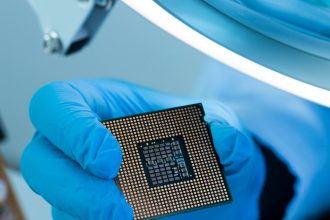Have you ever paused to wonder what’s behind the lightning-fast speed and sleek designs of your smartphones, laptops, or even the latest Wi-Fi gadgets? Well, a lot of our current tech owes its capabilities to microchips—tiny, complex circuits packed with transistors that process data and keep everything running. But as amazing as these chips are, there’s always a quest for improvement: smaller size, higher speed, greater efficiency, and less heat generated during operation. And guess what? A game-changing material named graphene might just hold the key to transforming this entire landscape.
So, what exactly makes graphene so special? It’s a single layer of carbon atoms arranged in a honeycomb pattern—think of a sheet only one atom thick. This seemingly simple structure equips graphene with superpowers that could revolutionize microchips. First and foremost, it’s incredibly conductive—way more than traditional materials like silicon. This means that electrical signals can zip through graphene-based circuits at lightning-fast speeds, and heat can dissipate more quickly. As a result, future microchips built with graphene could process data at speeds that leave current chips in the dust, all while generating less heat and consuming less energy.
What does that mean in practical terms? Well, imagine more powerful smartphones that don’t heat up while gaming or streaming high-resolution video, longer-lasting batteries because less energy is wasted, or ultra-fast laptops that can handle demanding tasks seamlessly. Graphene’s strength and flexibility also pave the way for the development of bendable or foldable electronics—imagine screens that aren’t just big and flat but can be folded into your pocket or worn comfortably on your wrist without sacrificing performance.
But the road to replacing silicon isn’t entirely smooth. There are hurdles researchers are still working to overcome, including how to produce high-quality, defect-free graphene at a scale suitable for mass manufacturing. Integrating graphene into existing semiconductor fabrication lines is another challenge. Despite these obstacles, progress is rapid. Companies and research institutes worldwide are investing heavily in innovative methods to harness graphene’s properties effectively.
In the near future, your next device might be powered by graphene—a material that could make electronics smaller, faster, more durable, and environmentally friendlier. The potential is enormous, and the race to perfect graphene-based microchips is well underway. If scientists succeed, they could unlock a technological leap forward that changes everything from how we communicate to how we work, play, and connect with the world around us.
The Future Is Bright (and Flexible!): How Graphene Could Shape a New Era of High-Performance, Flexible, and Energy-Efficient Microchips
Now, let’s take things a step further—imagine a world where your gadgets aren’t just faster and smarter, but also flexible, lightweight, and more durable. Think bendable smartphones, roll-up tablets, or even smart clothing embedded with tiny microchips that follow your every move. Sounds like science fiction? Not anymore, thanks to the remarkable properties of graphene.
Unlike the brittle silicon wafers we’re used to, graphene’s one-atom-thick structure is naturally flexible. This means that engineers can design electronic components that bend, twist, and stretch without breaking. Such flexibility opens up a whole new realm of possibilities—gadgets that conform to your body, fold into compact shapes, or even integrate seamlessly into fabrics.
But why does this matter? Because flexibility isn’t just about making devices more convenient; it can significantly boost their performance. For starters, graphene’s exceptional electrical conductivity enables ultra-fast data transfer, which means our devices could process information more quickly than ever before. At the same time, this superior conduction decreases heat generation, making devices more energy-efficient and less prone to overheating. No more bulky cooling systems or heat sinks—just sleek, lightweight gadgets that stay cool under pressure.
Another game-changer is heat management. Given graphene’s high thermal conductivity, it effectively disperses heat, enhancing the reliability and lifespan of high-performance microchips. This means devices can run longer, perform better, and endure the demands of modern usage patterns—think gaming, virtual reality, or complex data processing—without breaking a sweat.
Moreover, these properties aren’t just exciting for consumer electronics. They’re a boon for advanced applications like quantum computing, where the speed and sensitivity of sensors matter profoundly, or in the development of wearable health tech that needs to be comfortable and durable while collecting precise data.
Problems remain, of course. Producing large, defect-free sheets of graphene remains a challenge, and seamlessly integrating it into existing manufacturing processes is no small feat. But with the sizable investments from startups and tech giants, breakthroughs are becoming more frequent. Researchers are exploring cost-effective ways to produce enough high-quality graphene and develop scalable techniques to incorporate it into commercial chips.
If these efforts pay off, we could soon see a future where electronics are not only faster and more powerful but also inherently flexible—adapting to our lifestyles and needs in ways we’re only beginning to imagine. It’s a future where gadgets are lighter, more durable, more energy-efficient, and even more integrated into our daily lives—truly a new era driven by the marvel that is graphene.
In summary, graphene has the potential to redefine how our microchips are made, offering a pathway toward faster, smarter, more flexible, and energy-efficient devices. While challenges remain, the rapid pace of research and innovation suggests that this wonder material might be the foundation of the next technological revolution. From tiny smartphones to wearable tech and beyond, the future shaped by graphene promises to be brighter, smarter, and more flexible than ever before.







